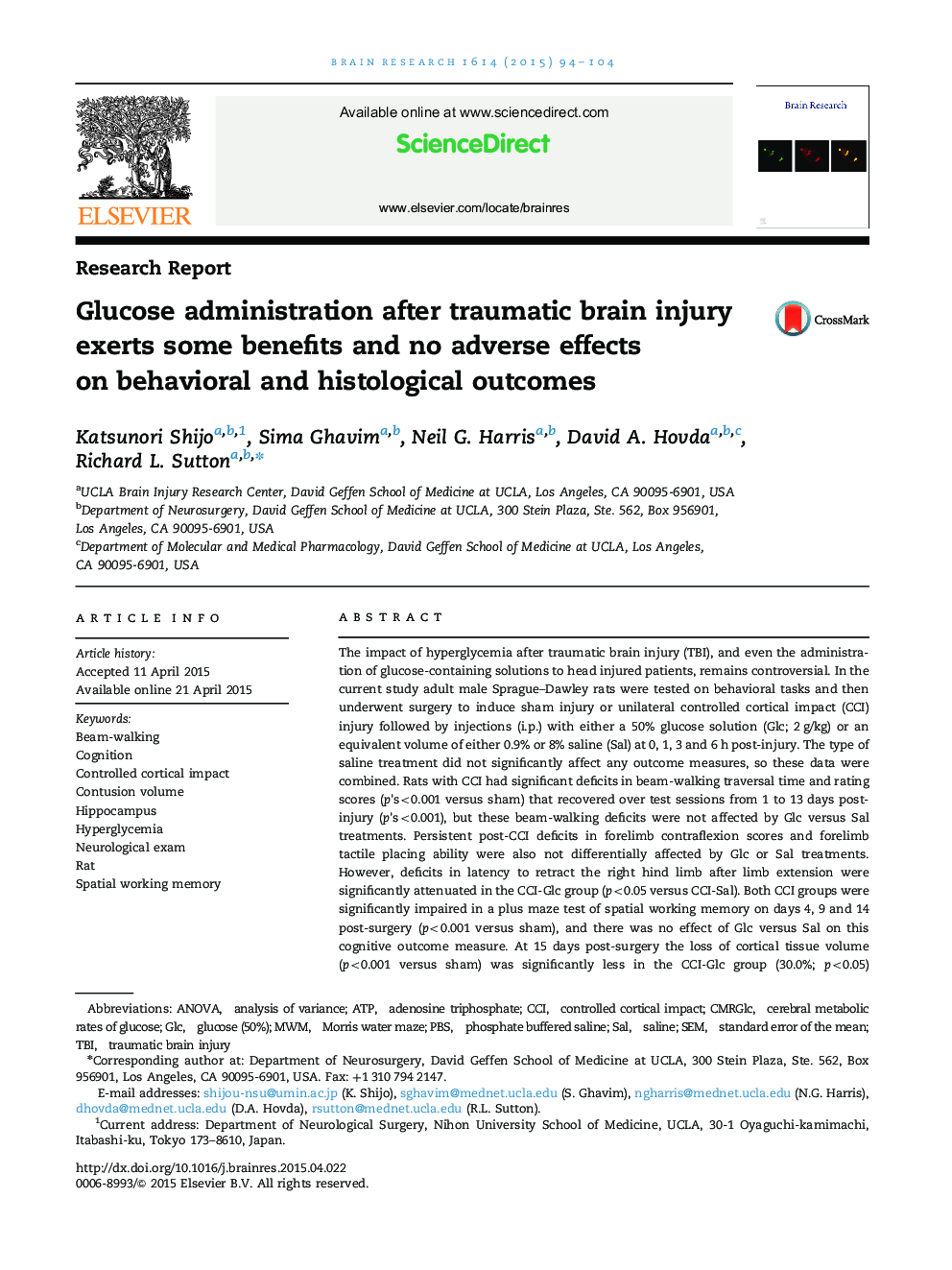| Article ID | Journal | Published Year | Pages | File Type |
|---|---|---|---|---|
| 6263028 | Brain Research | 2015 | 11 Pages |
â¢Four glucose treatments after TBI improved hind limb extension latencies in rats.â¢Glucose had mild benefits on beam-walking and tactile placing ability after TBI.â¢Glucose treatments did not affect forelimb contraflexion or spatial working memory.â¢Four glucose treatments reduced cortical injury volume 15 days post-TBI.â¢Glucose treatments after TBI did not alter loss of hilar neurons in the hippocampus.
The impact of hyperglycemia after traumatic brain injury (TBI), and even the administration of glucose-containing solutions to head injured patients, remains controversial. In the current study adult male Sprague-Dawley rats were tested on behavioral tasks and then underwent surgery to induce sham injury or unilateral controlled cortical impact (CCI) injury followed by injections (i.p.) with either a 50% glucose solution (Glc; 2 g/kg) or an equivalent volume of either 0.9% or 8% saline (Sal) at 0, 1, 3 and 6 h post-injury. The type of saline treatment did not significantly affect any outcome measures, so these data were combined. Rats with CCI had significant deficits in beam-walking traversal time and rating scores (p׳s<0.001 versus sham) that recovered over test sessions from 1 to 13 days post-injury (p׳s<0.001), but these beam-walking deficits were not affected by Glc versus Sal treatments. Persistent post-CCI deficits in forelimb contraflexion scores and forelimb tactile placing ability were also not differentially affected by Glc or Sal treatments. However, deficits in latency to retract the right hind limb after limb extension were significantly attenuated in the CCI-Glc group (p<0.05 versus CCI-Sal). Both CCI groups were significantly impaired in a plus maze test of spatial working memory on days 4, 9 and 14 post-surgery (p<0.001 versus sham), and there was no effect of Glc versus Sal on this cognitive outcome measure. At 15 days post-surgery the loss of cortical tissue volume (p<0.001 versus sham) was significantly less in the CCI-Glc group (30.0%; p<0.05) compared to the CCI-Sal group (35.7%). Counts of surviving hippocampal hilar neurons revealed a significant (~40%) loss ipsilateral to CCI (p<0.001 versus sham), but neuronal loss in the hippocampus was not different in the CCI-Sal and CCI-Glc groups. Taken together, these results indicate that an early elevation of blood glucose may improve some neurological outcomes and, importantly, the induction of hyperglycemia after isolated TBI did not adversely affect any sensorimotor, cognitive or histological outcomes.
